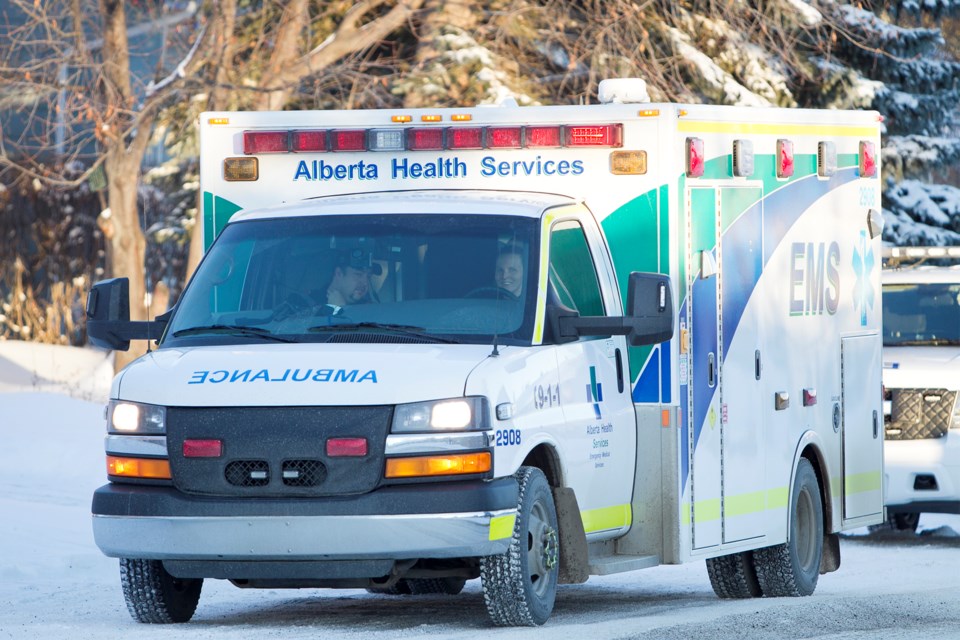Alberta’s rural health action plan lays out new provincial programs to address the ongoing crisis in rural emergency medical services (EMS), and Health Minister Adriana LaGrange says more changes can be expected in next year’s budget.
At a media event on Oct. 7, LaGrange said the province is focused on training more paramedics and is looking at introducing more inter-facility transfer (IFT) units in rural areas.
“We are hearing on an ongoing basis that we are not training enough EMS responders, and so that is why we're targeting this particular area, because we have identified a need in this area,” she said.
The province has introduced two new EMS-related grant programs. Underserved communities can now receive funding to establish medical first responder (MFR) agencies, which can provide preliminary assistance to patients before ambulances arrive on scene.
The emergency medical responder (EMR) community grants fund EMR training in eligible rural, remote, and Indigenous communities.
“In the past, sometimes ambulances have been used to transfer people to appointments, etc. We're looking at making sure that we have the right transportation mode for the right issue, concern, or emergency, to make sure that we're keeping our ambulances where they're most needed,” LaGrange said.
Earlier this year, Alberta Health Services contracted two private companies to provide 26 IFT units in Edmonton and 19 in Calgary to transport non-emergent patients between facilities rather than ambulances. LaGrange said it was too early to say whether the same system will be implemented in rural Alberta, and the government is completing an assessment of all “the EMS structures that currently exist” that will inform the 2025 budget.
Alberta’s government allocated $2 million for an independent review of the provincial air ambulance program and a paramedic workforce study to identify “what improvements need to be made to the EMS system to optimize coverage,” a spokesperson for Alberta Health said in an e-mail. Both contracts were awarded to PricewaterhouseCoopers.
“The reports, which cover all areas of the province and all AHS EMS workforce, are expected to be ready for the minister later this year,” according to LaGrange’s office.
Mike Parker, president of the Health Sciences Association of Alberta and a paramedic, said the medical responder grant programs are promising, but questioned what the government stands to gain from commissioning another report on EMS in the province.
“How many plans do we need to go through before we actually start doing something? It's getting to be a bit much,” Parker said.
Parker noted that the province has already completed several studies in recent years: the Helicopter Emergency Medical Services report (2021), the Alberta EMS Provincial Advisory Committee final report(2022), and the Alberta EMS Dispatch review (2022).
“It's all out there. They've done the work. So, hiding behind another report (to be released) in six months does nothing to support those on the front lines that are giving their all and sacrificing all they have,” Parker said.
Parker said the province needs to focus on retaining the paramedics it has “by improving wages and by giving them safe work conditions.”
“We're some of the lowest paid in the country now,” he said, and Alberta risks losing new grads to other provinces unless that changes.
Many rural ambulances, “specifically in the northern districts of this province, are running in a Code Red environment non-stop. They don't have anybody to fill trucks in the entire region,” Parker said. If the province intends to establish a parallel transfer service alongside EMS in those areas, staffing will be a major hurdle.
“We're barely able to staff the trucks we have. If you're going to use a model like this, you're going to have to pull (paramedics) in from somewhere else, because we don't have the people. And you're going to take those staff off the front lines, who are holding the system together now, and deploy them as a transfer unit to go three hours out into the rural communities.
“What they need is Advanced Care Paramedics working out there, not an IFT transfer system," he said.



